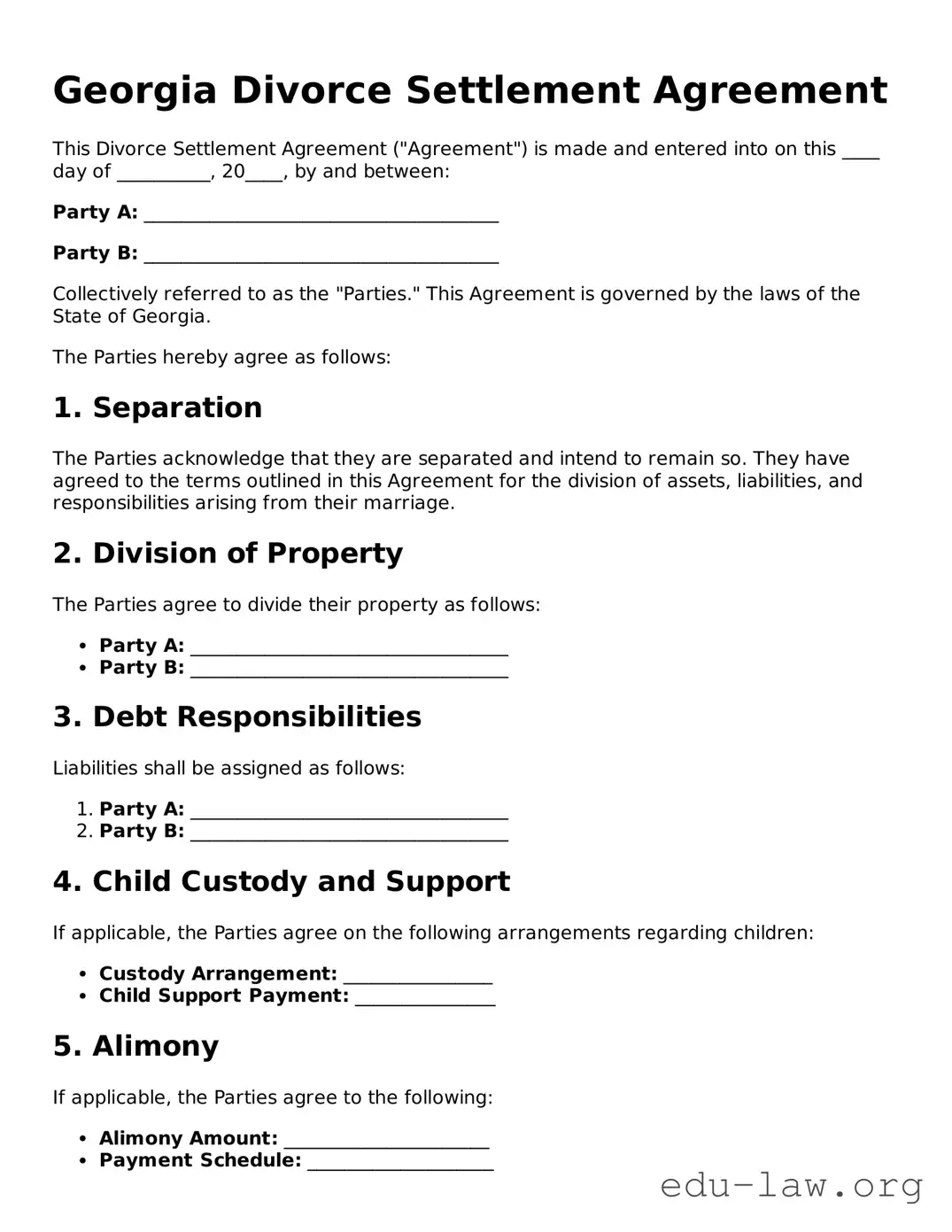Georgia Divorce Settlement Agreement
This Divorce Settlement Agreement ("Agreement") is made and entered into on this ____ day of __________, 20____, by and between:
Party A: ______________________________________
Party B: ______________________________________
Collectively referred to as the "Parties." This Agreement is governed by the laws of the State of Georgia.
The Parties hereby agree as follows:
1. Separation
The Parties acknowledge that they are separated and intend to remain so. They have agreed to the terms outlined in this Agreement for the division of assets, liabilities, and responsibilities arising from their marriage.
2. Division of Property
The Parties agree to divide their property as follows:
- Party A: __________________________________
- Party B: __________________________________
3. Debt Responsibilities
Liabilities shall be assigned as follows:
- Party A: __________________________________
- Party B: __________________________________
4. Child Custody and Support
If applicable, the Parties agree on the following arrangements regarding children:
- Custody Arrangement: ________________
- Child Support Payment: _______________
5. Alimony
If applicable, the Parties agree to the following:
- Alimony Amount: ______________________
- Payment Schedule: ____________________
6. Miscellaneous Provisions
This Agreement constitutes the entire understanding between the Parties. It may not be modified except in writing signed by both Parties.
7. Governing Law
This Agreement shall be governed by the laws of the State of Georgia.
IN WITNESS WHEREOF, the Parties subscribe their names on this ____ day of __________, 20____.
Party A Signature: ____________________________
Party B Signature: ____________________________
Witness Signature: ____________________________
